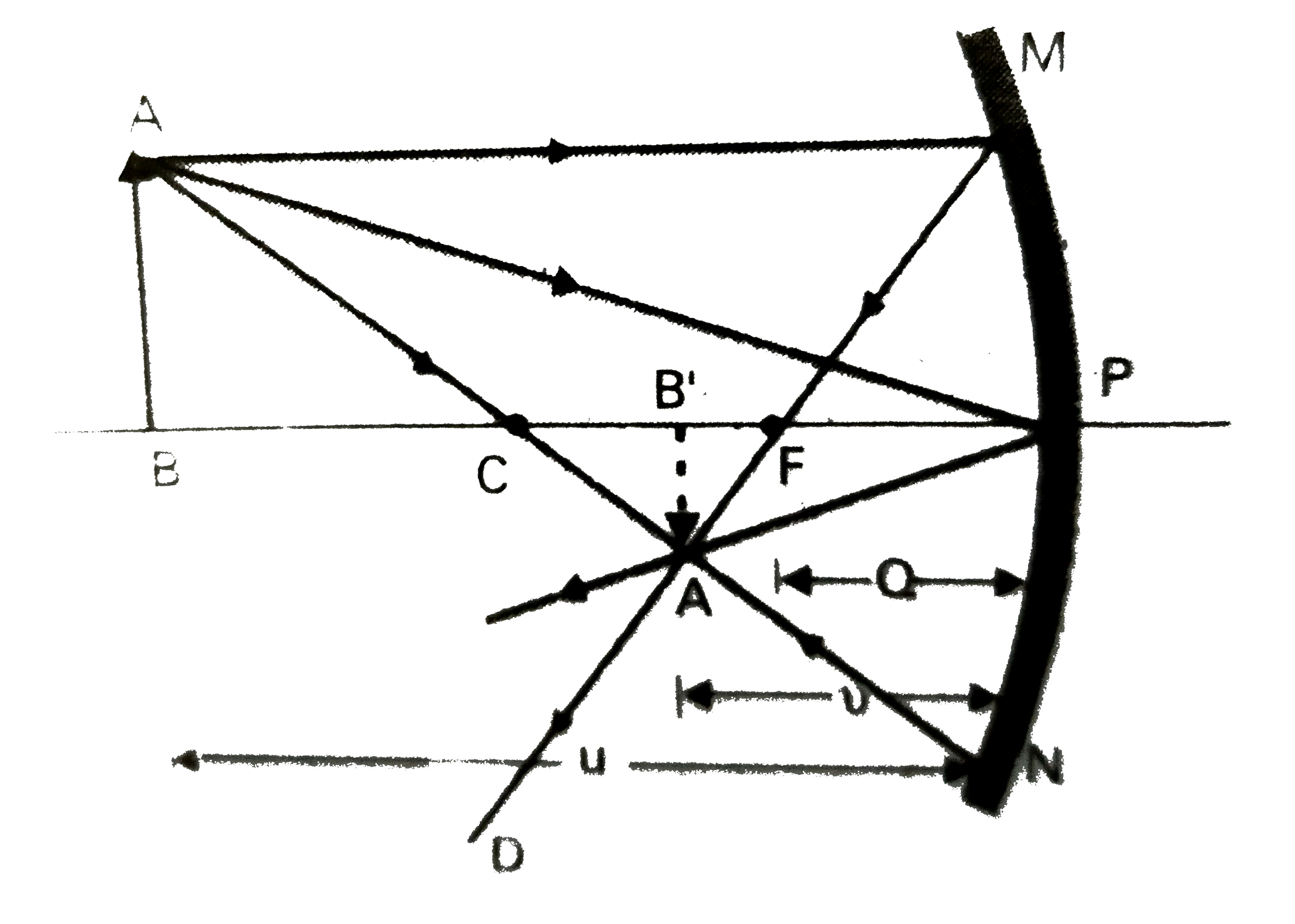A concave mirror of focal length 10 cm is placed at a distance 35 cm from a wall. How far from the wall should an object be placed so that its real image is formed on the wall ?Solution in Telugu
f = 10 cm, υ = 35 cm
1f=1υ+1−u (using sign convention)
1u=1υ−1f=135−110
1u=10−3535×10=−114
U=−14cm.
Distance of the object from the wall =35−14=21cm.
Topper's Solved these Questions
- RAY OPTICAL AND INSTRUMENTSBook:VIKRAM PUBLICATION ( ANDHRA PUBLICATION)Chapter:RAY OPTICAL AND INSTRUMENTSExercise:SHORT ANSWER QUESTIONS
Explore 10 Videos
- RAY OPTICAL AND INSTRUMENTSBook:VIKRAM PUBLICATION ( ANDHRA PUBLICATION)Chapter:RAY OPTICAL AND INSTRUMENTSExercise:LONG ANSWER QUESTIONS
Explore 10 Videos
- RAY OPTICAL AND INSTRUMENTSBook:VIKRAM PUBLICATION ( ANDHRA PUBLICATION)Chapter:RAY OPTICAL AND INSTRUMENTSExercise:TEXTUAL EXAMPLES
Explore 18 Videos
- NUCLEIBook:VIKRAM PUBLICATION ( ANDHRA PUBLICATION)Chapter:NUCLEIExercise:DAM SURE (VSAQ)
Explore 1 Video
- SEMICONDUCTOR ELECTRONICS : MATERIALS , DEVICES , AND SIMPLE CIRCUITS Book:VIKRAM PUBLICATION ( ANDHRA PUBLICATION)Chapter:SEMICONDUCTOR ELECTRONICS : MATERIALS , DEVICES , AND SIMPLE CIRCUITS Exercise:ADDITIONAL EXERCISES
Explore 8 Videos
Similar Questions
A light ray passes through a prism of angle A in a position of minimum deviation. Obtain and expression for (a) the angle of incidence in terms of the angle of the prism and the angle of minimum deviation (b) the angle of refraction in terms of the refractive index of the prism.
View SolutionWhat is the cartesian sign convention ? Applying this convention and using a neat diagram, derive an expression for finding the image distance using the mirror equation.
View SolutionSuppose that the lower half of the concave mirror's reflecting surface in figure is covered with an opaque (non-reflective) material. What effect will this have on the image of an object placed in front of the mirror ?

View SolutionThe half life of .58Co is 72 days. Calculate its average life.
View SolutionThe Number of silicon atoms per m3 is 5×1028 . This is doped simultaneously with 5×1022 atoms per m3 of Arsenic and 5×1020 per m^(3) atoms of Indium. Calculate the number of electron and holes. Given that ni=1.5×1016m−3. Is the material n-type or p-type ?
View SolutionA concave mirror of focal length 10 cm is placed at a distance of 35 cm from a wall. How far from the wall should an object be placed to get its image on the wall ?
View SolutionA convex mirror of focal length 20 cm is placed 50 cm from a wall. How far the wall should an object be placed to form a real image on the wall ?
View SolutionA concave mirror of focal length 10cm is placed at a distance of 35cm from a wall. How far from the wall should an object be placed to get its image on the wall ?
View SolutionA concave mirror of focal length 20 cm is placed at a distance of 50 cm from a wall. How far from the wall should an object be placed to form its real image on the wall ?
View SolutionAn object is placed at a distance of 30 cm from a concave mirror and its real image is formed at a distance of 30 cm from the mirror. The focal length of the mirror is
View SolutionA convex lens of focal length 10 cm is placed at a distance of 12 cm from a wall. How far from the lens should an object be placed so as to form its real image on the wall?
View SolutionA candle flame 2 cm high is placed at distance of 2 meter from a wall. How far from the wall must a concave mirror to placed in order to form an image of the flame 6 cm high on the wall ?
View SolutionA concave mirror of focal length 20cm is placed 50cm from a wall. How far from the wall an object is placed to form its real image on the wall?
View SolutionA 2.5 cm high candle flame is placed at a distance of 2.5 m from a wall. How far from the wall a concave mirror must be placed so that a 7.5 cm high inverted image of the flame is formed on the same wall? Also calculate the focal length of the mirror.
View SolutionAn object is placed between a wall and a concave mirror of focal length 15 cm. The distance between wall and mirror is 40 cm. Find the position of the object placed such that the image of the object is just formed on the wall.
View Solution

